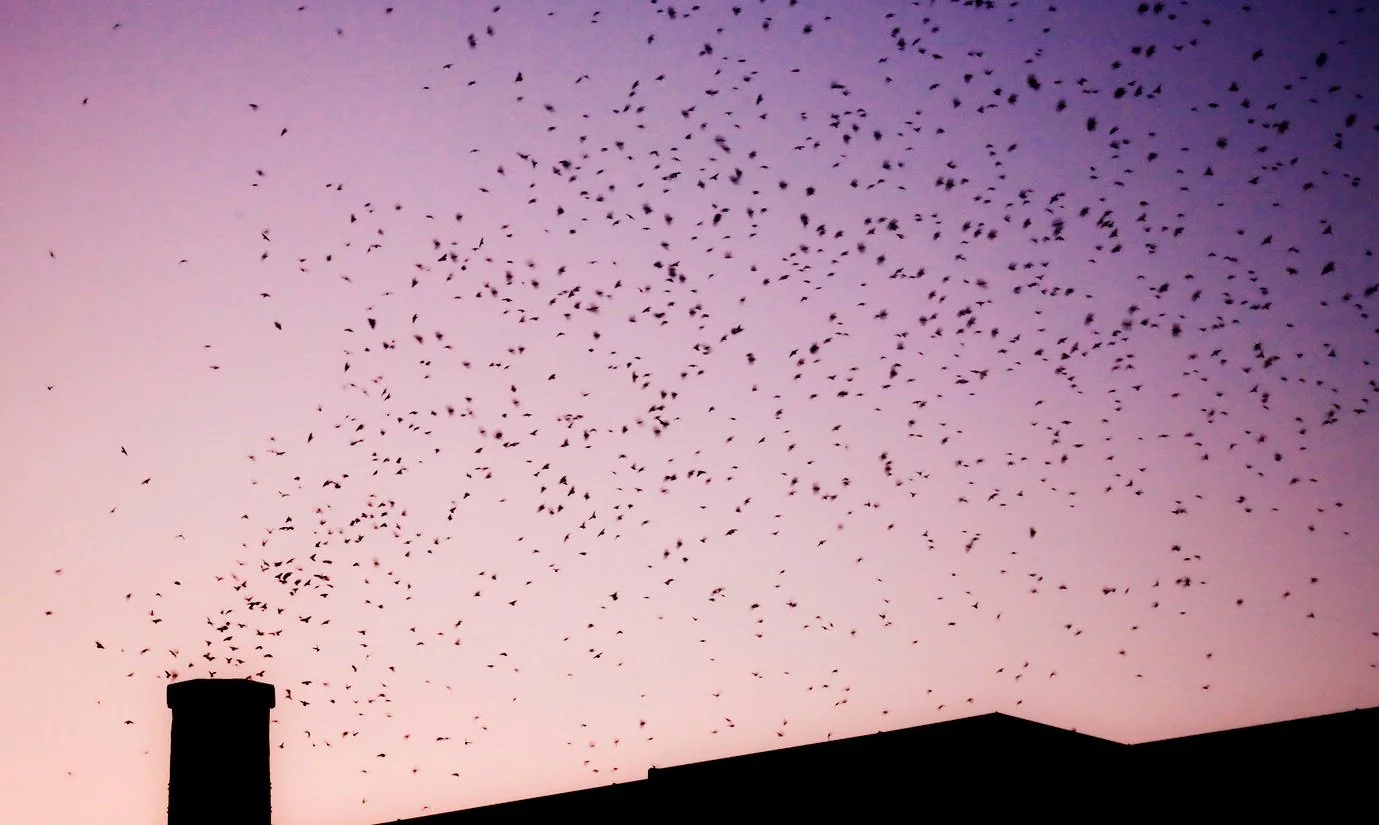Fall migration is a time of great movement: first-year birds freshly hatched and fledged and seasoned wayfinders making their way south to follow the food and avoid the cold.
Chimney Swift range map, courtesy of Cornell Lab of Ornithology / AllAboutBirds.org
One of the most entertaining and magnificent migrations is that of Chimney Swifts. This species makes a tremendous migration each spring and fall between South America (as far south as Chile) and North America (as far north as Saskatchewan in Canada). That is over 5,000 miles—a mighty feat for a bird that weighs no more than an ounce and has a wingspan of less than a foot!
But what draws most people’s attention to Chimney Swifts in the fall is their incredible roosting behavior. Chimney Swifts spend 90% of their lives flying—only pausing their lives on-the-wing to roost and to nest. They eat, sleep, mate, and bathe while flying. In migration, flocks of Chimney Swifts roost in—you guessed it—chimneys, clinging with their feet to the walls while they sleep.
A Chimney Swift spends most of its life flying. Photo by Andy Reago & Chrissy McClarren FCC
A flock of Chimney Swifts roost in a chimney for the night. Photo by Greg Schecter FCC
And the way they enter the chimney is quite a sight.
As the sun sets, Chimney Swifts dart around the skies, catching any last insects to snack on before turning in for the night. Then just as sunset meets dusk, the swifts will form a swirling tornado of birds, circling above the chimney of their choice. One by one they drop into the chimney, sometimes in the hundreds or thousands, until suddenly the flock has entirely disappeared from sight, lining the walls of the chimney until dawn.
Hundreds of Chimney Swifts coming in to roost at Cherokee Heights Middle School in Madison, WI on August 29, 2020. Video by Brenna Marsicek / Madison Audubon
This phenomenon is the central “show” of Swift Night Out, a series of events held all over the country. Swift Night Out is a community and citizen science opportunity to gather, watch birds, ooh and ahh, and count the number of swifts using the chimney. This is both for fun (and it’s SO fun!) and also for science, to be able to monitor Chimney Swift populations throughout their range in the United States.
Chimney Swifts have declined in the US by nearly 70% since the 1960’s, and as aerial insectivores which also rely on man-made structures to roost and nest, they’re vulnerable to many threats. Most significantly, pesticides reduce the availability of their food sources, and capped, metal-lined, or demolished chimneys eliminate their nesting and roosting sites.
Sandy Schwab, a champion for Chimney Swift conservation and former coordinator of the Wisconsin Chimney Swift Working group, is in her glory talking about swifts at Cherokee Heights Middle School in 2020. Photo by Brenna Marsicek / Madison Audubon
Madison Audubon has partnered with the Wisconsin Chimney Swift Working Group (originally led by Sandy Schwab, a force for Chimney Swift conservation in Madison who passed away in 2021) for many years to host Swift Night Out, usually at locations like Cherokee Heights Middle School, Our Lady Queen of Peace Church, or Blessed Sacrament Church, all in Madison. It’s always a fun and celebratory evening.
In 2023, our two organizations partnered up with another two fantastic organizations, the BIPOC Birding Club of Wisconsin and Feminist Bird Club – Madison, to put on an even greater celebration of swifts on September 17. We were happy to welcome friends from the Dane County Humane Society’s Wildlife Center and SOS Save Our Songbirds to the mix as well. Around 350 bird-lovers showed up to watch the swifts.
We met at Cherokee Heights Middle School. The evening was beautiful, the soccer field stage was set, with chairs and blankets pointed toward the chimney. And a grand total of Chimney Swifts seen that night… 5. Oh dear! While we still had fun and enjoyed the great company, it was a great reminder that bird migration waits for no one.
A great group of bird-watchers came out for Swift Night Out! Photo by Caitlyn Schuchhardt
Lots of great conversations about birds and bird conservation at Swift Night Out. Photo by Jeff Galligan
Chimney Swift numbers at that chimney were consistently above 1,000 the week prior, but in lead-up to the event, those numbers continuously reduced each night. The swifts must have determined it was time to move on, to follow their food southward and begin their long journey to warmer climates. We will try again next year!
In the meantime, there are a few ways you can support Chimney Swifts in your own home and community (much of this information is provided by Birds Canada):
If you have a home with a chimney:
Avoid capping masonry chimney, or remove the cap between late April and October when chimney swifts are nesting or migrating (unless there is a metal liner, in which case your chimney is not swift-accessible).
Close your damper to prevent nestlings from falling into the fireplace. This also acts as a sound barrier to minimize disturbance to nesting swifts.
Routine chimney sweeping is important for maintaining good nesting habitat.
Chimney caps are designed for easy removal. Chimneys should be inspected and cleaned at least once per year to prevent dangerous buildup of soot or creosote. Cap removal/installation can be scheduled at the same time as the homeowner’s chimney inspection and cleaning.
Advocate for schools and churches to maintain their chimneys with Chimney Swifts in mind. These large chimneys are often excellent habitat for these birds!
Written by Brenna Marsicek, Madison Audubon director of communications and outreach
Cover photo by Steve Benoit FCC









